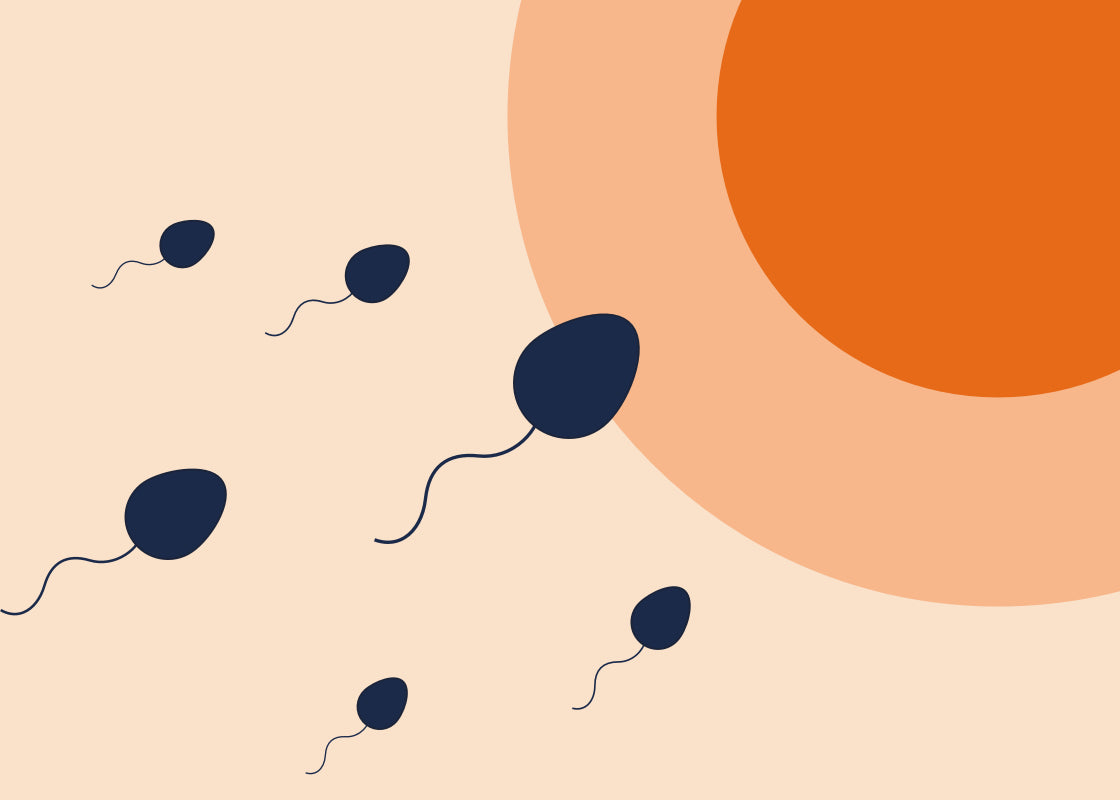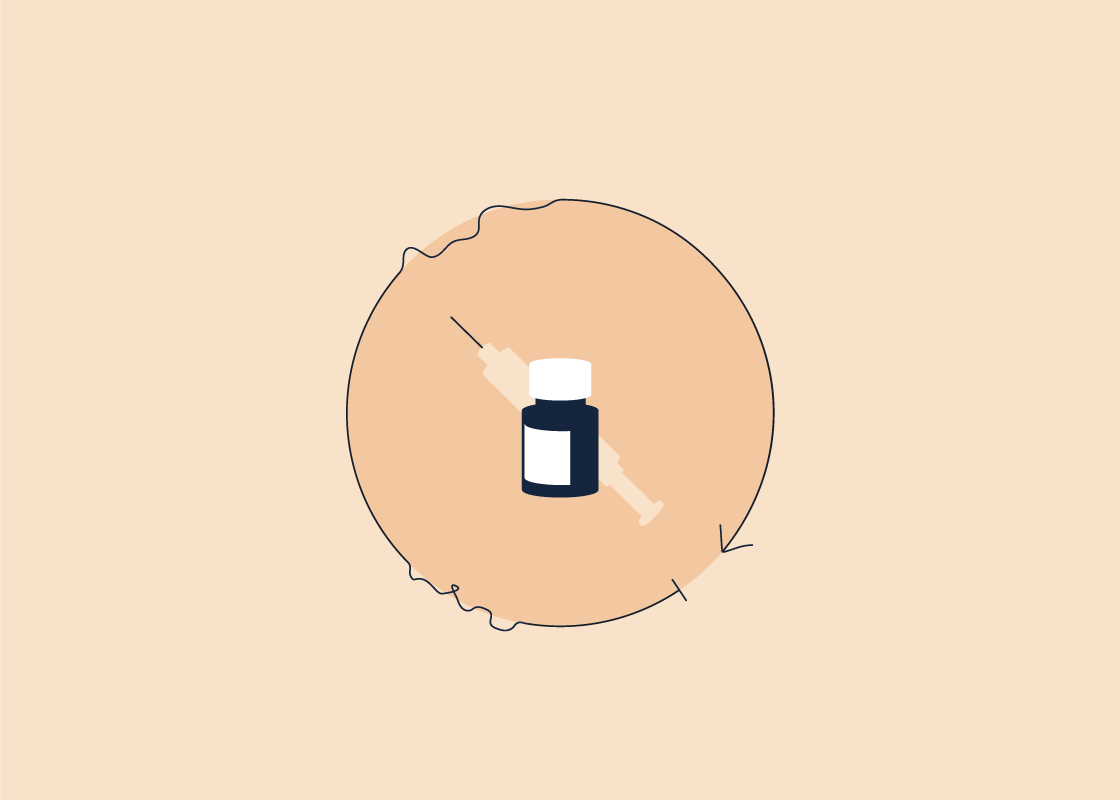You and your partner decide it's time for a baby. And now, you're curious.
What is conception? And how soon can you detect pregnancy after these processes take place?—Well, there's a lot that goes on behind the scenes, so it's understandable to have many questions.
If you're looking to sink your teeth into the science behind fertilisation and conception, you're in the right place. This all-in-one guide will walk you through what to expect and how you can detect pregnancy after conception occurs.
What Does Conception Mean?
Conception refers to the joining of the sperm and egg that forms a single cell. The terms fertilisation and conception are often used interchangeably.
Natural conception occurs in your fallopian tube, which are long slender tubes connecting your ovaries to your uterus.
Your male partner releases millions of sperm during ejaculation, and these little swimmers will compete to fertilise the egg. When the sperm meets a viable egg, it penetrates and fertilises the egg—and there you have it, an event known as conception.
Of course, if no fertilisation takes place, your uterus throws a tantrum and begins shedding its lining in a process we know all too well—menstruation.
The Timing Behind Conception
Conception, or fertilisation, can only occur during a certain time period, and this is related to another process called ovulation. It's a little confusing but hang in there. We'll break it down for you.
Ovulation is one part of your menstrual cycle. During ovulation, the ovary releases a mature egg, which makes its way down the fallopian tube towards the uterus. At this time, a sperm can fertilise the egg, leading to conception.
According to research, the six most fertile days of your menstrual cycle land on the five days before ovulation and the day of ovulation itself [1]. This golden window of opportunity represents the only time in your cycle when conception can take place with sexual intercourse.
Hence, tracking your ovulation date enables you to pinpoint your ovulation date and fertile window. Having sex during this window significantly boosts your chances of successful conception.
Of course, your body is rooting for you to get pregnant. And so, your body won't leave you completely in the dark and making wild guesses. Some natural signs of ovulation to look out for include changes in the colour and texture of your vaginal mucus and a small rise in body temperature.
These symptoms and natural changes occur as a result of changing hormonal levels in your body as follows:
- A surge in luteinising hormone (LH) occurs nearing ovulation.
- Progesterone levels increase, which thickens the uterine lining in preparation for the implantation of a fertilised egg [2].
Tracking your symptoms can be unreliable and a hassle, so people turn to ovulation test kits or tracking devices to make the work effortless.
One fantastic option is the inne minilab, an ovulation tracking device that uses quick and mess-free saliva tests to measure your hormone levels and predict your ovulation date.
This device connects directly to your mobile phone. And, via the inne mobile app, you'll receive personalised insights based on your unique hormonal trend. You'll find out when your fertile period is, so you can pinpoint the prime time for fun in the sheets!
How Conception Occurs: A Deeper Plunge Into The Process
Once released by the ovary, the mature egg takes around five days to travel through the fallopian tube. However, the egg can only be fertilised between 12-24 hours after it is released, after which it begins to break down. Meanwhile, healthy sperm can survive up to five days inside a woman's body.
Putting these pieces of the puzzle together, you can see why it's favourable to have sexual intercourse during the five days before or on the day of ovulation itself for a higher chance of conception.
But what happens during conception?
Upon entering the women's body, the race begins. The sperm will try to swim up the cervix and uterus into the fallopian tube.
Some sperm don't make it very far, but the strongest will make it into the fallopian tube and hang around, waiting for an egg to fertilise. When the egg arrives, the sperm burrows into it, and they both form a single cell known as a zygote.
Around 3 out of 4 natural conceptions don't make it past six weeks of pregnancy. But, thankfully, they have a very high chance of making it all the way through if they do [3].
The zygote travels through the fallopian tube into the uterus. As it moves down the fallopian tube, it rapidly divides to form a ball of cells known as the blastocyst.
On rare occasions, the zygote splits into two, leading to the formation of two embryos. Because these contain the same genetic material (from the same sperm and egg), what you get are identical twins [4].
In rare instances when each of your ovaries release one egg in the same cycle (which totals two eggs), each of them can be fertilised by a different sperm. Since they don't come from the same egg and sperm, these babies won't look alike [4]. And they may even be of different genders. The end result?—fraternal, or non-identical twins!
What Is Implantation?
Implantation is the process where the fertilised egg attaches itself to the uterus walls.
But how long after conception does implantation happen?
Well, implantation is usually completed ten days after conception occurs. Within 4-5 days, the blastocyst reaches the uterus. Then, implantation commences. The blastocyst burrows into the uterus wall, and a unique phenomenon takes place—half of the blastocyst begins developing into the embryo (which eventually becomes your baby), while the other half forms the placenta.
The placenta produces a hormone called human chorionic gonadotropin (hCG) early in the pregnancy. This hormone signals to the ovaries that the mission was a success. As a result, the ovaries will:
- Halt egg production in the meantime
- Continue releasing estrogen and progesterone, the chief pregnancy hormones
Other important roles of the placenta include:
- Producing estrogen and progesterone
- Providing oxygen and nutrients to the developing fetus
- Removing waste products and carbon dioxide produced by the fetus [5]
In addition to the placenta forming, the amniotic sac also begins to develop. This fluid-filled sac is where your fetus will stay snuggled in until they're due to enter the world.
Once the sac forms, the little blastocyst has graduated to the next stage—congratulations, your blastocyst is now an embryo!
Eight weeks after fertilisation, the embryo is considered a fetus. And by the 10th week, most organs have completely formed. Around 40 weeks after conception, you'll be carrying your very own bundle of joy in your arms!
How Can You Detect Conception?
The best way to detect if conception has occurred is via a pregnancy test. The two main types are:
- Urine tests. Urine tests typically come as at-home pregnancy test kits, and you can easily find these test kits at the pharmacy or supermarket. These tests have been designed to detect the presence of hCG in your urine, which can usually be done as early as ten days after conception occurs. Urine tests tend to be accurate as long as they are used according to the instructions of the manufacturer or your healthcare professional.
- Blood tests. Blood tests tend to be more expensive and are conducted in a hospital or at your doctor's office. Blood tests are usually reserved for couples undergoing fertility treatment or if the doctor thinks there may be any pregnancy-related issues. Blood tests can detect both the presence and level of hCG in your blood.
But how soon can a blood test detect pregnancy after conception?
Because blood tests can detect very small quantities of hCG, they can provide an accurate answer early in the pregnancy—typically around 9 to 12 days after conception occurs.
However, if you're taking an at-home pregnancy test, it's best to wait until after you miss your period before taking the test. Taking the test too early on can lead to a negative result even if you are pregnant (false negative).
If you'd like to find out your conception date, you can do so with a pregnancy confirmation ultrasound. An ultrasound can help determine your baby's age and when you likely conceived, as well as when the baby is due. The results will not be the most accurate during early pregnancy but are fairly reliable.
Final Takeaway: How Conception Occurs
Conception happens when a sperm fertilises and joins with an egg. It's a breathtaking and wondrous process that forms life in your womb. After conception takes place, you'll get to cradle your newborn in your arms in less than nine months!
If you're looking to conceive, tracking your ovulation date may be helpful. You can do this by looking out for any ovulation symptoms and signs or manually marking your calendar, but doing so can be tedious (and not the most accurate).
The inne minilab offers a more convenient and accurate way to learn more about your unique cycle and pinpoint your ovulation date.
With this information, you can determine your fertile window and significantly improve your chances of conceiving. You'll appreciate the simplicity and convenience offered, but if not, we promise a full refund.
We only want the best for you.
References
1. Dunson DB, Baird DD, Wilcox AJ, Weinberg CR. Day-specific probabilities of clinical pregnancy based on two studies with imperfect measures of ovulation. Hum Reprod. 1999;14(7):1835-1839. doi:10.1093/humrep/14.7.1835
2. Cable JK, Grider MH. Physiology, Progesterone. In: StatPearls. Treasure Island (FL): StatPearls Publishing; May 9, 2021.
3. Boklage CE. Survival probability of human conceptions from fertilization to term. Int J Fertil. 1990;35(2):75-94.
4. Sahu M, Prasuna JG. Twin Studies: A Unique Epidemiological Tool. Indian J Community Med. 2016;41(3):177-182. doi:10.4103/0970-0218.183593
5. Griffiths SK, Campbell JP. Placental structure, function and drug transfer. Continuing Education in Anaesthesia Critical Care & Pain. 2015; 15(2): 84-89. doi: 10.1093/bjaceaccp/mku013




